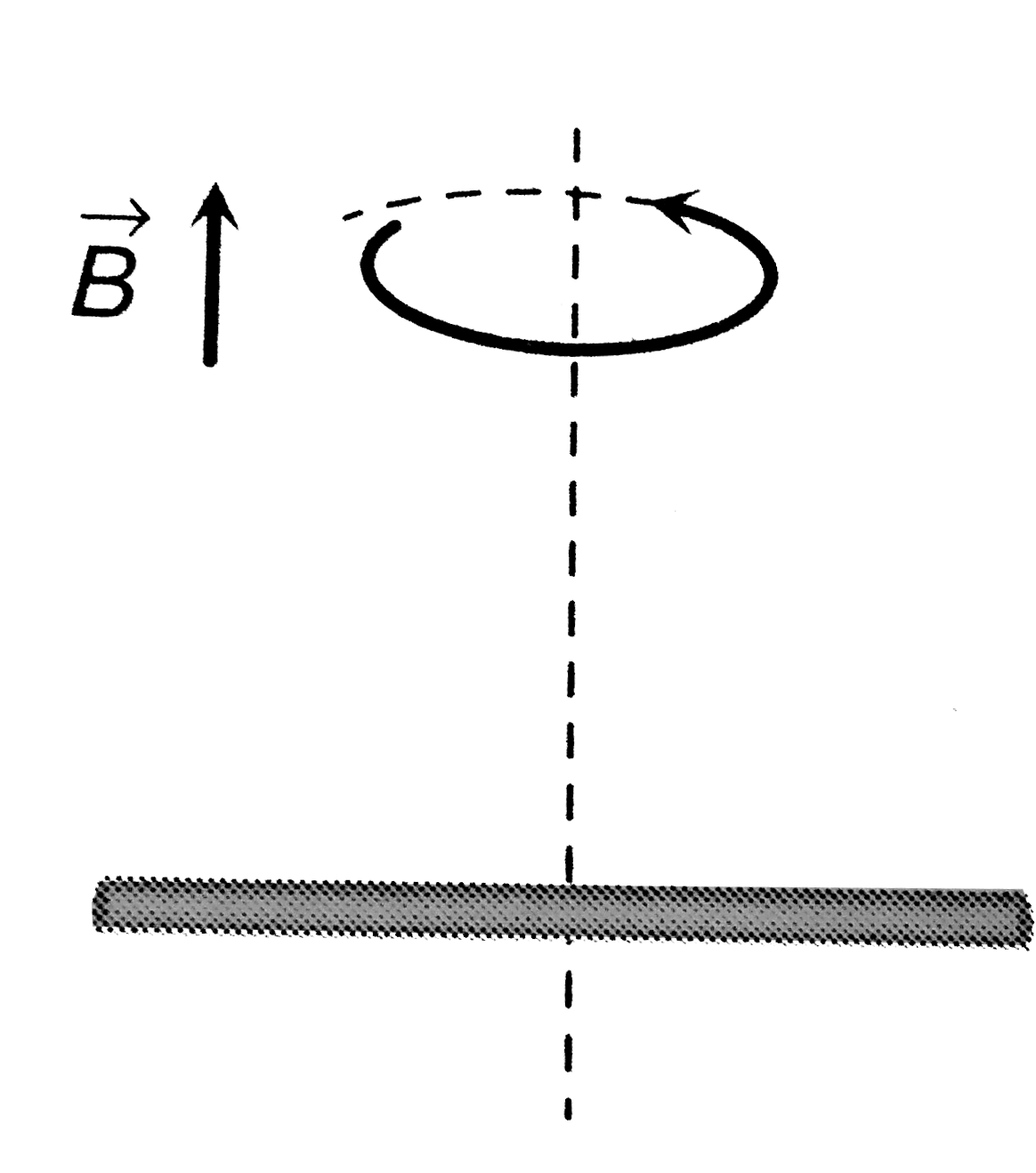A conducting rod of length L rotates with angular speed ω in a uniform magnetic field of induction B which is perpendicular to its motion .The induceed emf developed between the two ends of the rod is Solution in Telugu
The correct Answer is:B
EM.f induced between the two ends of the rod is given by,
e=Blv sin 0
⇒e=Blv [∴0=90∘
⇒ e=BlxxΩl2
∴e=Bω22

Topper's Solved these Questions
Similar Questions
The energy of a parallel plate capacitor when connected to a battery is E. With the battery still in connection, if the plates of the capacitor are separated so that the distance between them is twice the original distance, then the electrostatic energy becomes
02:57View SolutionInfinite number of spheres , each of mass m are placed on the X- axis at distance 1,2,4,8,16, … meter from origin . The magnitide of the gravitational field at the origin is
02:44View SolutionA rod of length l rotates with a small but uniform angular velocity ω about its perpendicular bisector. A uniform magnetic field B exists parallel to the axis of rotation. The potential difference between the centre of the rod and an end is
View SolutionA conducting rod of length 2l is rotating with constant angular speed w about its perpendicular bisector. A uniform magnetic field B exists parallel to the axis of rotation. The e.m.f. induced between two ends of the rod is
01:57View SolutionA copper rod AB of length L, pivoted at one end A, rotates at constant angular velocity omega, at right angles to a uniform magnetic field of induction B. The e.m.f developed between the mid point C of the rod and B is
 01:58View Solution
01:58View SolutionA copper rod of length L rotates with an angular with an angular speed 'ω' in a uniform magnetic field B. find the emf developed between the two ends of the rod. The field in perpendicular to the motion of the rod.
View SolutionWhen a rod of length l is rotated with angular velocity of ω in a perpendicular field of induction B , about one end , the emf across its ends is
04:01View SolutionA copper rod of length l rotates an angular velocity ω in a uniform magnetic field B as show in figure . What is the induced emf across its ends ?
 02:44View Solution
02:44View SolutionA rod of length l rotates with a small but uniform angular velocity ω about its perpendicular bisector. A uniform magnetic field B exists parallel to the axis of rotation. The potential difference between the centre of the rod and an end is
View SolutionA copper rod of length L rotates with an angular with an angular speed 'ω' in a uniform magnetic field B. find the emf developed between the two ends of the rod. The field in perpendicular to the motion of the rod.
02:46View SolutionA conducting rod of length 2l is rotating with constant angular speed omega about is perpendicular bisector. A uniform magnetic field vec(B) exists parallel to the axis of rotation. The e.m.f. induced between two ends of the rod is
06:24View SolutionA conducting rod of length 2l is rotating with constant angular speed w about its perpendicular bisector. A uniform magnetic field B exists parallel to the axis of rotation. The e.m.f. induced between two ends of the rod is
 03:17View Solution
03:17View SolutionA conducting rod of length L with one end pivoted is rotated with a uniform angular speed omega in a vertical plane, normal to a uniform magnetic field B. Deduce an expression for the emf induced in this rod.
03:02View SolutionA conducting rod OA of length l is rotated about its end O with an angular velocity omega in a uniform magnetic field directed perpendicualr to the rotation. Find the emf induced in the rod, between it's ends.
View SolutionA conducting rod of length 2l is rotating with constant angular speed w about its perpendicular bisector. A uniform magnetic field B exists parallel to the axis of rotation. The e.m.f. induced between two ends of the rod is
 View Solution
View Solution

